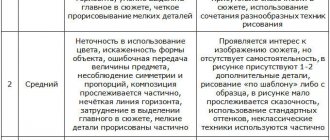Types of thinking
Human thinking is divided into several types, and in each individual only one of them is most pronounced.
Visual and effective thinking, as a rule, is clearly expressed in children under 3 years of age. The child does not yet know words, but already expresses emotions and performs a certain sequence of actions. For example, show your baby how to add cubes one by one, and he will happily repeat it. Moreover, he will gradually begin to come up with new ways to build and then destroy the pyramid. This process will involve imaginative thinking.
Verbal-logical (verbal) thinking is knowledge that a person already possesses, although it is difficult to present it in the form of a specific subject. Children aged 4-5 years old use this particular way of thinking - they talk and reason a lot. Visual and verbal thinking differ in the content of the means used. If this is visual thinking, then clear images of objects and actions appear in the brain. Its opposite is verbal thinking - these are abstract sign structures.
Development of thinking: ways to train the brain
Thinking can rightfully be called the crown of human knowledge. It is a mental activity with its own goals, motives, operational functions and results. It can be characterized in different ways: as the highest degree of assimilation and processing of information and the establishment of cause-and-effect relationships between objects of reality, as a process of displaying the obvious properties of objects and phenomena and, consequently, the formation of ideas about the surrounding reality, and as a process of cognition of the world based on on the continuous replenishment of the baggage of concepts and ideas about it.
But, regardless of the interpretation, it can be established that the better a person’s thinking is developed, the more effectively he can interact with the world around him and other people, study and cognize, understand phenomena and truths. Thinking is formed as a person develops from his very birth, but life circumstances do not always develop in such a way that it continues to develop. It often happens that, having reached a certain level, development slows down. However, each of us is able to influence this process, like many others. In other words, everyone is capable of developing their own thinking, and we will talk about how this is done in this article.
But before we get down to the main material, we should say a few words about what thinking is like in general. In total, there are several of its main types, studied by specialists most often and most of all:
- Visual-figurative thinking;
- Verbal-logical (aka abstract) thinking;
- Visual-effective thinking;
- Logical thinking;
- Creative thinking.
Below we will provide a brief description of each type of thinking and indicate effective and simple ways to develop them.
Visual-figurative thinking and exercises for its development
With the help of visual-figurative thinking, reality is transformed into images, and ordinary phenomena and objects are endowed with new properties. It involves visually solving problems and problems without the need to resort to practical actions. The right hemisphere of the brain is responsible for its development. Visual-figurative thinking should not be confused with imagination, because... it is based on real objects, actions and processes, and not imaginary or fictitious ones.
Visual-figurative thinking can be developed in adults and children in the same ways. Here are some good exercises:
- Remember several people with whom you had the opportunity to communicate today, and imagine in detail their clothes, shoes, hairstyle, appearance, etc.
- Using just two nouns, one adverb, three verbs and adjectives, describe the words "success", "wealth" and "beauty".
- Try some thought experiments: imagine the shape of your pet's ears or, for example, an elephant; count the number of apartments in your entrance and imagine how they are located in the house; Now turn the English letter “N” 90 degrees and determine what came out of it.
- Describe the following objects and phenomena in words: a flying swan, flashing lightning, the kitchen of your apartment, lightning, a pine forest, a toothbrush.
- Recall in your memory the image of a recent meeting with friends and give mental answers to several questions: how many people were in the company, and what clothes did each of them wear? What food and drinks were on the table? What were you talking about? What was the room like? What position did you sit in, what sensations did you experience, what did you taste from the food and drinks you consumed?
These exercises can be modified at your discretion - you can do whatever you want, but the main thing here is to use visual-figurative thinking. The more often you use it, the better it will develop.
You can also check out a course that will help you develop your thinking in just a few weeks. Check it out here.
Verbal-logical (abstract) thinking and exercises for its development
Verbal-logical thinking is characterized by the fact that a person observing a certain picture as a whole isolates from it only the most significant qualities, not paying attention to unimportant details that simply complement this picture. There are usually three forms of such thinking:
- Concept – when objects are grouped according to characteristics;
- Judgment - when any phenomenon or connections between objects are affirmed or denied;
- Inference – when specific conclusions are drawn based on several judgments.
Everyone should develop verbal and logical thinking, but it is especially useful to develop it from an early age in children, because this is an excellent training for memory and attention, as well as imagination. Here are some exercises you can use for yourself or your child:
- Set a timer for 3 minutes, during this time write the maximum number of words starting with the letters “zh”, “w”, “ch” and “i”.
- Take a few simple phrases, such as “what’s for breakfast?”, “let’s go to the movies,” “come visit,” and “there’s a new exam tomorrow,” and read them backwards.
- There are several groups of words: “sad, cheerful, slow, cautious”, “dog, cat, parrot, penguin”, “Sergey, Anton, Kolya, Tsarev, Olga” and “triangle, square, board, oval”. From each group, select those words that do not fit the meaning.
- Identify the differences between a ship and an airplane, grass and a flower, a story and a poem, an elephant and a rhinoceros, a still life and a portrait.
- A few more groups of words: “House - walls, foundation, windows, roof, wallpaper”, “War - weapons, soldiers, bullets, attack, map”, “Youth - growth, joy, choice, love, children”, “Road - cars, pedestrians, traffic, asphalt, poles.” Choose one or two words from each group, without which the concept (“house”, “war”, etc.) could exist as such.
These exercises, again, can be quite easily modernized and modified, simplifying or complicating them at your discretion. It is because of this that each of them can be an excellent way to train abstract thinking in both adults and children. By the way, any such exercises, among other things, perfectly develop intelligence.
Visually effective thinking and exercises for its development
Visual-effective thinking can be described as the process of solving mental problems by transforming a situation that has arisen in real life. It is rightfully considered the first way to process received information, and it develops very actively in children under 7 years of age, when they begin to combine all kinds of objects into one whole, analyze them and operate with them. And in adults, this type of thinking is expressed in identifying the practical benefits of objects in the surrounding world, being the so-called manual intelligence. The left hemisphere of the brain is responsible for the development of visual and effective thinking.
An excellent way to learn and train here is the usual game of chess, making puzzles and solving puzzles, sculpting all kinds of plasticine figures, but there are also several effective exercises:
- Take your pillow and try to determine its weight. Then “weigh” your clothes in the same way. After this, try to determine the area of the room, kitchen, bathroom and other areas of your apartment.
- Draw a triangle, a rhombus and a trapezoid on album sheets. Then take your scissors and turn all these shapes into a square by cutting once in a straight line.
- Place 5 matches on the table in front of you and make 2 equal triangles from them. After that, take 7 matches and make 2 triangles and 2 squares from them.
- Buy a construction set at the store and use it to create various shapes - not just those indicated in the instructions. It is recommended that there be as many details as possible - at least 40-50.
As an effective complement to these exercises, chess, etc., you can use our excellent course on developing thinking.
Logical thinking and exercises for its development
Logical thinking is the basis of a person’s ability to think and reason consistently and without contradictions. It is necessary in most life situations: from ordinary dialogues and shopping to solving various problems and developing intelligence. This type of thinking contributes to a successful search for justifications for any phenomena, a meaningful assessment of the world around us, and the competent construction of speech and judgments. The main task in this case is to obtain true knowledge about the subject of reflection with the basis for analyzing its various aspects.
Among the recommendations for the development of logical thinking are solving logical problems (and this is also an excellent training of memory and attention in children and adults), passing IQ tests, logical games, self-education, reading books (especially detective stories), arguing and intuition training.
As for specific exercises, we advise you to take note of the following:
- From several sets of words, for example: “chair, table, sofa, stool”, “circle, oval, ball, circle”, “fork, towel, spoon, knife”, etc. you need to choose a word that does not fit the meaning. Despite its simplicity, this is a very effective technology for developing logical thinking, and similar sets and exercises can be found in large quantities on the Internet.
- Group exercise: Get together with friends or the whole family and divide into two teams. Let each team invite the opposing team to solve a semantic riddle that conveys the content of some text. The point is to determine what kind of text it is. Here is a small example: “The clergyman had an animal on the farm. He had strong warm feelings for him, however, despite this, he carried out a violent action on him, which led to his death. This happened for the reason that the animal did something unacceptable - it ate part of the food that was not intended for it.” Thinking logically, one can recall a children's song that begins with the words: “The priest had a dog, he loved it...”
- Another group game: a member of one team performs an action, and a member of the other must find the reason for it, and then the reason for the reason, and so on until all the motives for the behavior of the first participant are clarified.
Let us repeat that these exercises (in particular the last two) are excellent ways to develop logical thinking and intelligence, suitable for people of all ages.
Creative thinking and exercises for its development
Creative thinking is a type of thinking that allows you to organize and analyze ordinary information in an unusual way. In addition to the fact that it contributes to an extraordinary solution to typical tasks, questions and problems, it also increases the efficiency of a person’s assimilation of new knowledge. Using creative thinking, people can consider objects and phenomena from different angles, awaken in themselves the desire to create something new - something that did not exist before (this is the understanding of creativity in its classical sense), develop the ability to quickly switch from one task to another and find many interesting options for doing work and ways out of life situations.
Methods for developing creative thinking are based on the idea that a person realizes only a small percentage of his potential during his life, and his task is to find opportunities to activate unused resources. The technology for developing creativity is based primarily on several recommendations:
- You need to improvise and always look for new ways to solve everyday problems;
- There is no need to focus on established frameworks and rules;
- You should expand your horizons and constantly learn something new;
- You need to travel as much as possible, discover new places and meet new people;
- You need to make learning new skills and abilities a habit;
- You need to try to do anything better than others.
But, of course, there are also certain exercises for the development of creative thinking (by the way, we advise you to familiarize yourself with our courses on the development of creative thinking and thinking in general - you will find them here and here).
Now let's talk about exercises:
- Take several concepts, for example, “youth”, “man”, “coffee”, “teapot”, “morning” and “candle”, and select for each of them the maximum possible number of nouns that define their essence.
- Take several pairs of different concepts, for example, “piano – car”, “cloud – locomotive”, “tree – picture”, “water – well” and “plane – capsule” and select the maximum number of similar features for them.
- Imagine several situations and think about what could happen in each of them. Examples of situations: “aliens are walking around the city”, “not water, but lemonade is running from the tap in your apartment”, “all domestic animals have learned to speak human language”, “it snows in your city in the middle of summer for a week.”
- Look around the room where you are now and stop your gaze on any object that interests you, for example, on a closet. Write down on a piece of paper 5 adjectives that go with it, and then 5 adjectives that are completely opposite.
- Think about your job, hobby, favorite singer or actor, best friend or significant other, and describe it (him/her) in at least 100 words.
- Remember some saying or saying, and write a short essay, poem or essay based on it.
- Write a list of 10 purchases you would make before the end of the world.
- Write a daily plan for your cat or dog.
- Imagine that, upon returning home, you saw that the doors of all apartments were open. Write 15 reasons why this could happen.
- Make a list of 100 of your life goals.
- Write a letter to your future self - when you are 10 years older.
Also, to activate your creativity and intelligence, you can use two excellent methods in everyday life - synectics and brainstorming. These ways to develop creativity will help you destroy all stereotypes, expand your comfort zone and develop an original and unique type of thinking.
In conclusion, we will say that if you have a desire to organize or continue your education and develop your thinking more effectively, then you will certainly like one of our courses, which you can find at this link.
Otherwise, we wish you every success and well-rounded thinking!
We also recommend reading:
- Storytelling
- Cognitive processes
- The best blog materials in 2020: developing thinking, brain training, self-education
- Language and thinking
- Divergent thinking: features, methods of development
- Mental processes: types and brief description
- Intelligence and its development: several recommendations
- Combinatorial thinking
- Right-brain thinking: meaning and exercises for development
- Thinking games
- Logic vs intuition
Key words:_D1025, 1Cognitive science
Why is verbal thinking necessary?
First of all, it is very important in the formation of mental functions at an early age. If a child cannot correctly express his thoughts in words, then he cannot form a verbal image. Subsequently, the peculiarities of thinking in a child at an early age affect adult life. Children who have not learned to communicate at one time grow up closed off from the outside world. As a rule, people who are successful in the humanities have verbal thinking. This can be explained by their ability to think figuratively. It is easy for such people to talk and talk about the concepts of existence, philosophical teachings, art and poetry.
People with developed verbal thinking love to reason out loud and to themselves. These are very open and sociable individuals. When communicating with strangers, they always think first and speak later. They have very well developed logic and quickly cope with various complex situations.
Scientists and Verbal Thinking
If verbal thinking is a necessity for humanists, then the question arises: do lovers of the exact sciences need to develop such thinking? Many people know such a brilliant professor as Albert Einstein. Until the age of 6, he practically did not speak and, accordingly, did not have verbal thinking. Despite all this, he was a genius.
But what if we look at this problem from the other side? People who saw the little 6-year-old boy not talking at all thought he was just a stupid child. Communication skills are very important in modern society. A person who cannot express his thoughts is unlikely to succeed in the professional field. Verbal-logical thinking is very necessary, because it helps to find solutions in difficult life situations.
Exercises to develop verbal and logical thinking
There are a huge number of exercises for developing different types of thinking. To develop verbal thinking, it is recommended to use logic puzzles. For example, look at the objects around you and try to give them new names (children do this best). For example, a cup is a drink, a pen is a writer, etc. An excellent exercise for developing verbal thinking is tongue twisters. You can memorize old ones, or you can come up with new ones. Say them both out loud and to yourself.
Playing chess is very helpful in developing verbal thinking. Firstly, during the game, as a rule, the players communicate with each other, and secondly, the game forces a person to think and calculate steps ahead. Verbal thinking is verbal thinking, so any classes to develop it are recommended to be carried out in a group. You can develop this mindset as a family. The peculiarities of a person’s thinking are associated with his knowledge in various fields. Discussions with acquaintances and friends help not only to learn a lot of new and useful information, but also to develop verbal thinking.
Advantages of a person with developed abstract thinking
As a rule, these people have abilities in sciences such as mathematics, physics, and astronomy. It is easy for them to study in schools and universities. They can:
- easy to remember large amounts of information;
- abstract and simulate non-standard situations;
- even in confusing situations, make non-standard decisions;
- quickly adapt to unfamiliar conditions.
Verbal-logical thinking allows people who have developed it to build associative series associated with the definitions they hear.
The main positive features of such thinking are unlimited space and time. Those. This type of generalized thinking gives a person unlimited possibilities.
With the right approach and regular training, you can achieve your goals and optimal performance in almost any area:
- the science;
- creation;
- intellectual sports;
- career;
- training, etc.







